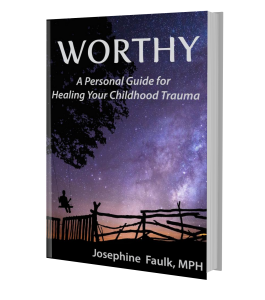Attachment–Disorganized By Chronic Childhood Trauma
 In the beginning, there was attachment. In the 1960s a developmental psychologist named Mary Ainsworth conducted a study with 106 babies and their parents called The Strange Situation experiment. Her findings exposed two general categories of infant attachment styles, which determine the state of your relationships as an adult:
In the beginning, there was attachment. In the 1960s a developmental psychologist named Mary Ainsworth conducted a study with 106 babies and their parents called The Strange Situation experiment. Her findings exposed two general categories of infant attachment styles, which determine the state of your relationships as an adult:
1. Secure attachment: Approximately 65% of the population falls under this category. The child with secure attachment enjoys a parent who is quick to recognize and meet their child’s needs and who is sensitive to their reactions to their environment and other people. This ensures the child feels safe enough to freely and happily explore their environment. These children grow up with the perception that they live in a secure world where their needs are significant and will be met. They have psychologically and emotionally healthy role models which teach them how to love, respect and govern themselves.
2. Insecure attachment: And here is where the other 35% of the, cross-cultural, population is hiding out. Insecure attachment is divided up as below in 2a, 2b and 2c.
2a. Avoidant attachment: This child’s parent is distant emotionally and does not connect often or well with their child. The child does not feel secure and thus does not freely explore its world. The child becomes emotionally withdrawn as a form of self-protection. The child grows up subconsciously believing their needs will probably not get met. However, these children develop coping techniques which they carry into adulthood. In adulthood they especially struggle with emotional intimacy, which feels foreign and risky.
2b. Ambivalent attachment: Their parent is unreliable because they are inconsistent in their behavior; sometimes they are attuned to their child, other times they swing to the opposite end and are neglectful emotionally and/or physically. This results in uncertainty and anxiety for the child and anger which may or may not be expressed overtly. They carry the perception that they cannot rely on anyone meeting their needs. However, these children develop coping techniques which they carry into adulthood. As adults they often suppress their own painful belief that they can count on no one to meet their needs, by over-meeting others’ needs.
2c. Disorganized attachment (discovered later by researcher Mary Main): This is the form of attachment most prevalent among those who endured chronic childhood trauma. These children are so overwhelmed by chronic traumatic stress that they are not capable of developing coping strategies and this is how they enter adulthood. Disorganized attachment is considered to be the most extreme style of attachment. As children, when the person, or people, that we are supposed to be attached to are the source of our distress we live in a state of ongoing uncertainty resulting in confusion and apprehension.
This is a key factor to the reason we dissociate to survive. Numb is preferable to rejection, fear, neglect, abandonment and emotional and physical pain. Alas, it is not a good long-term coping strategy and is an obstacle to creating and maintaining healthy relationships. Dr. Tim Clinton and Dr. Gary Sibcy, authors of Attachments: Why You Love, Feel And Act The Way You Do, sum up the bane of our existence, pre-recovery, relative to our failed attempts at healthy, mutually satisfying relationships – of every kind.
These sudden shifts from one attachment strategy to another often leave those closest to them confused and frustrated while the ‘disorganized’ persons themselves feel trapped in a chaotic world, one of rapidly shifting emotions, impulsive behaviors and muddled relationships.
(Attachments: Why You Love, Feel And Act The Way You Do, p. 95,Clinton, T. & Sibcy G. )
In an attempt to grab a handful of what was so poignantly missing in our childhood, our traumatized child parts regularly make forays into our present adult life. The result is our confusion and frustration over our behavior, communication and unexpected emotional reactions. Inescapably, we manifest our internal landscape into our outer landscape. Without recovery, we will continue to draw to ourself people who will facilitate recreating the exact same issues we have grappled with since the calamity that was our childhood. Removing the psychological and emotional debris of our childhood trauma is a long and arduous endeavor. You must know by now; there is no escape. You either struggle through recovery or you struggle through life. Since you’re reading this- I think, perhaps, you have already made your choice.
Available at Amazon > Worthy: A Personal Guide for Healing Your Childhood Trauma
Before you go, I want to invite you to join our Worthy Community. By signing up (the form is in the sidebar) you will receive:
* Chapter One of my book WORTHY A Personal Guide for Healing Your Childhood Trauma immediately
* Personal delivery of my entire Monday blog post weekly
****************************
You can find and subscribe to me spreading the love at:
https://www.instagram.com/worthyasweare/
https://www.facebook.com/healingyourchildhoodtrauma/
https://www.pinterest.com/azsunnygrl/worthy-as-we-are/
Copyright ©2018 Josephine Faulk, MPH. Excerpt from WORTHY A Personal Guide For Healing Your Childhood Trauma by Josephine Faulk, MPH. Available, along with accompanying Workbook, on Amazon.




